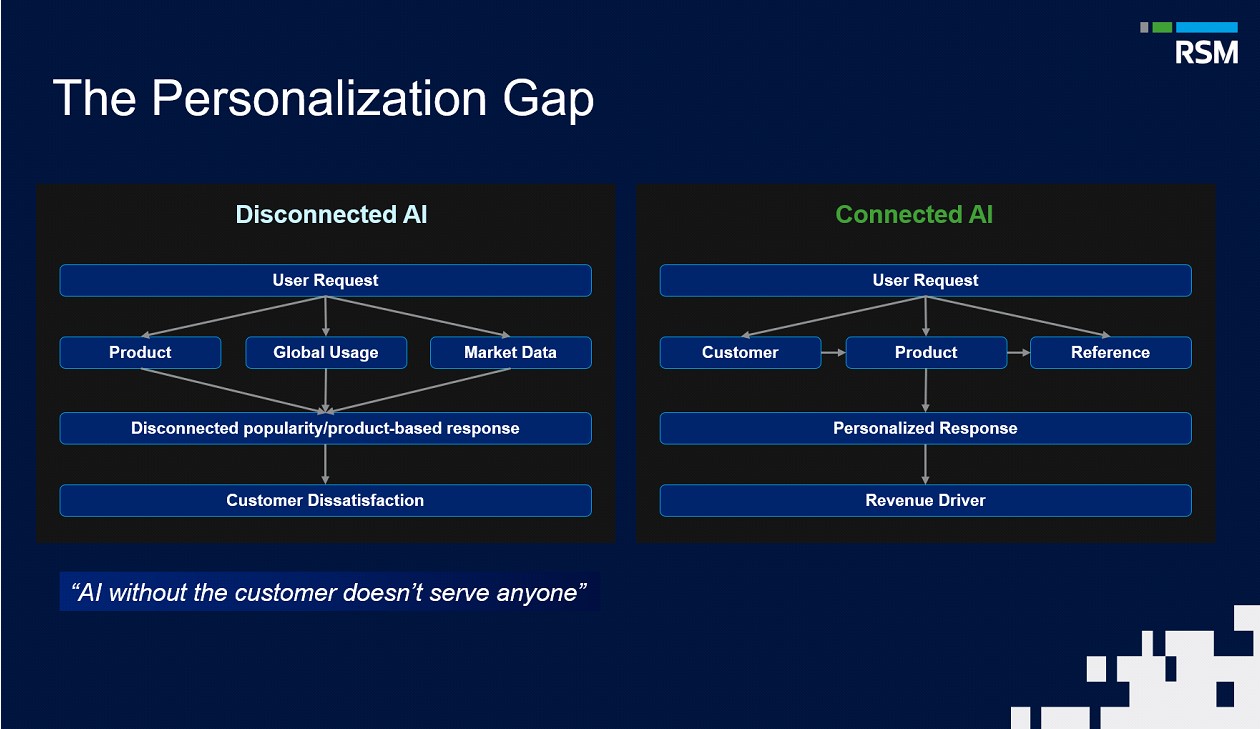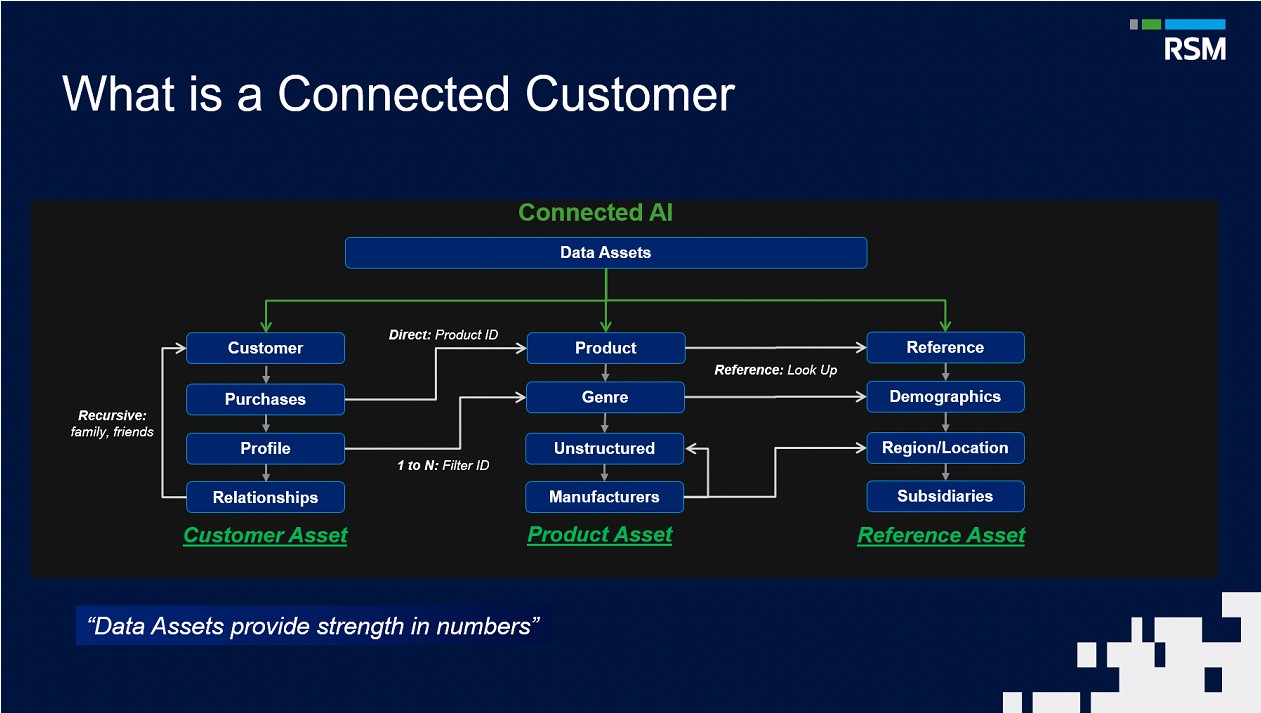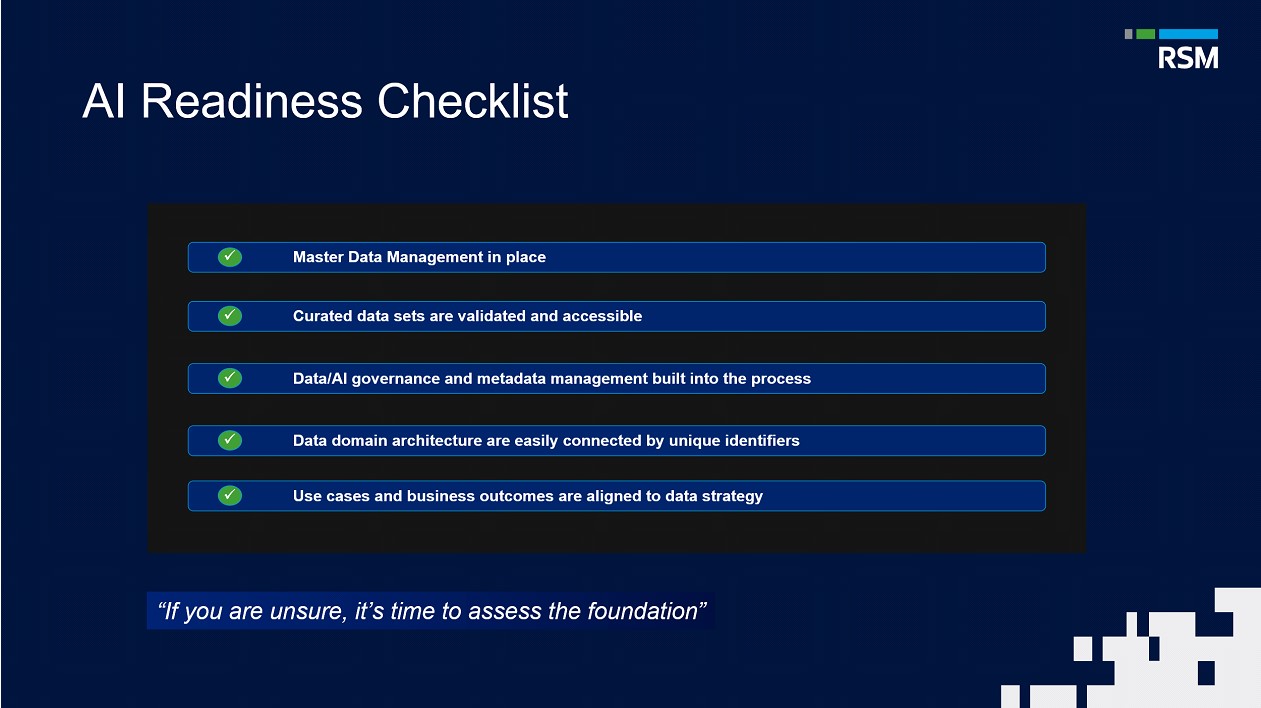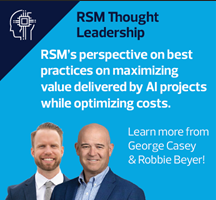Artificial intelligence is everywhere—but is it working for your customers?
Artificial intelligence is now embedded in everyday experiences—whether consumers opt into it or not. One clear example is how streaming platforms use artificial intelligence–powered algorithms to curate playlists, recommend songs, and generate personalized radio stations. These capabilities allow listeners to rediscover old favorites and uncover new artists they might not have found otherwise. But while artificial intelligence offers convenience, it also raises questions about authenticity, bias, and the loss of serendipity in music discovery.
Why connected customer data matters
To deliver meaningful outcomes, artificial intelligence must be able to leverage a unique customer record and all its relevant transactional, descriptive, and referential data. Consider a common failure point: a leading music platform powered by advanced artificial intelligence consistently returns poor results. Despite its sophistication, the model lacks a connected view of customer preferences and demographics.
For example, one of my favorite bands shares a name with a children’s television show. When I use voice search—whether in my car, at home, or on my phone—the platform defaults to the children’s content unless I provide a long, specific instruction. This inability of the model to access or link data to provide the correct response impacts my satisfaction with the platform and undermines the promise of personalization.
Additionally, suggested playlists often reflect the children’s show rather than the genre of the band I listen to. Two core data issues drive this failure:
- Bias in training data: The model seems to prioritize popularity metrics, spelling or other factors and disregards demographic, behavioral, or historical data that could guide more accurate recommendations.
- Disconnected product data: The artificial intelligence model treats the product (songs or albums) as isolated from the consumer. Without linking customer identity, purchase history, and preferences, the model cannot deliver relevant results.
What better-connected data could solve
If the model were trained on connected customer data—including playlists, purchase history, and demographic information—it would recognize my intent and return the correct content. This is especially true given the band is a daily listen and a source of frequent merchandise purchases.
This example illustrates a broader challenge: even enterprise organizations with vast resources struggle to implement artificial intelligence effectively. For small and mid-sized companies, the path to success lies in learning from these missteps and building a strong data foundation that supports use cases and desired outcomes.
Building a foundation for artificial intelligence success
Whether in music, consumer products, or financial services, a connected customer is essential for artificial intelligence, adoption and satisfaction. As artificial intelligence evolves toward more agentic models with memory and learning capabilities, organizations must ensure their data architecture supports tightly coupled domains, metadata, and analysis layers. A truly connected customer will be comprised of assets which can serve both singular and enterprise use cases. Each asset should be carefully curated and built for scalability while easily linked through recursive, direct and reference ID’s which are universal. By using this methodology when designing and deploying architecture, organizations will find higher efficiency and avoid costly issues as we saw in our example.
In the music example, the model had access to vast data in the product data asset—but lacked a connected subset to effectively provide the algorithm with a correct or expected outcome. A more integrated approach would improve results, increase customer satisfaction, and drive revenue through retention and engagement.
Organizations must move beyond traditional data warehouses and marts toward strategically layered data assets accessible via APIs. These assets should share curated, authoritative master data domains at their core while layering in analytical or other transactional data providing the highest resilience and validity. This shift enables artificial intelligence models to deliver greater efficiency, customer satisfaction, and revenue impact.
Ask the right question: Is your data ready for artificial intelligence?
For organizations planning or executing artificial intelligence initiatives, the key question is: Is your data ready for artificial intelligence? If the answer is “I don’t know,” it’s time to assess your data governance, master data management functions, and data foundations—across applications, integrations, and data lifecycle processes. A connected view of customer, product, vendor, and other domains is critical to maximizing the value of artificial intelligence.
Ready to connect your data?
RSM helps clients build foundational data governance through master data management, design scalable architecture, and create connected customer experiences. Reach out to learn how we support innovation and modernization in today’s artificial intelligence landscape.

 RSMUS.com
RSMUS.com





